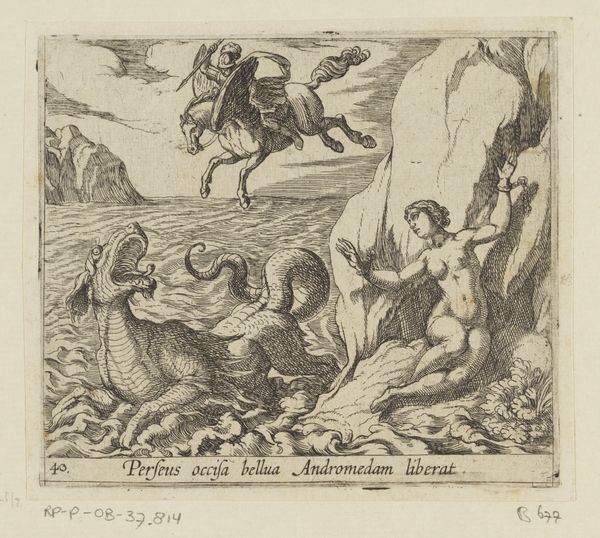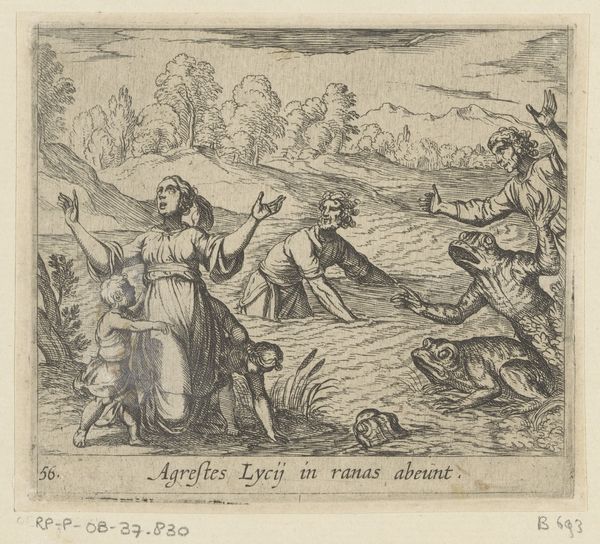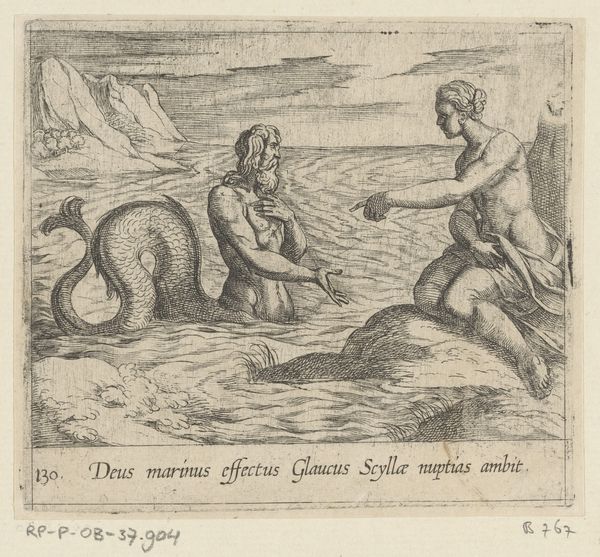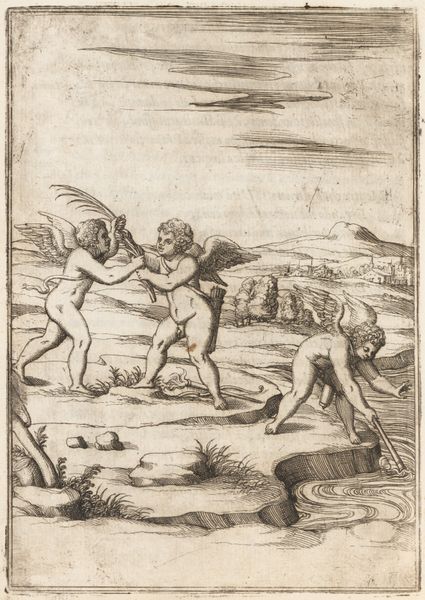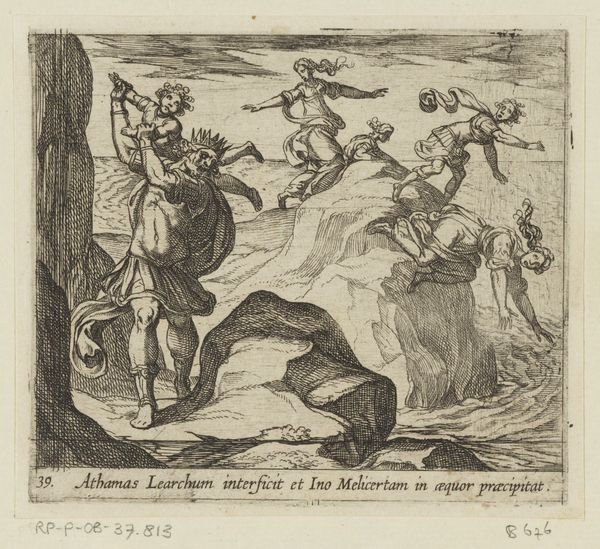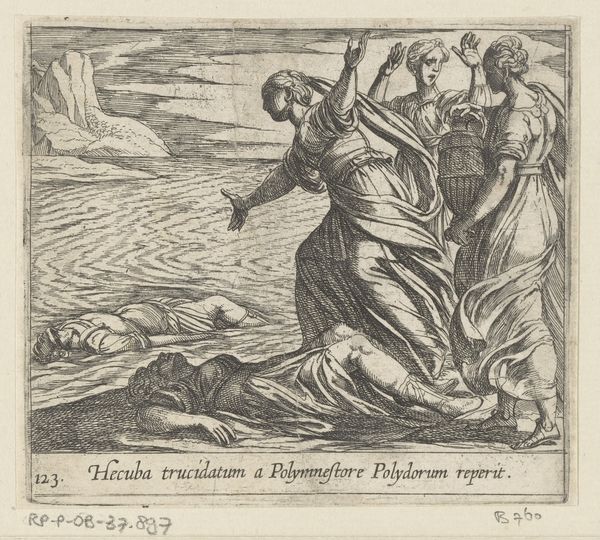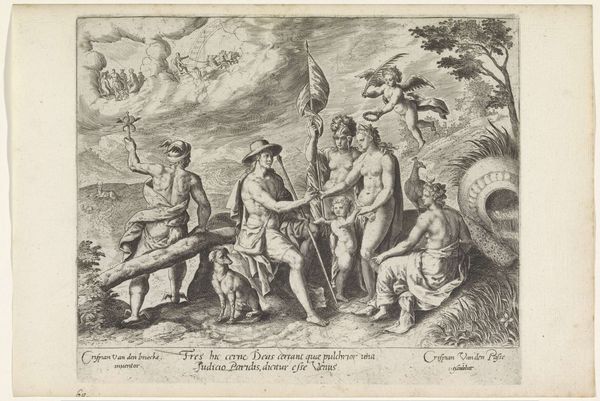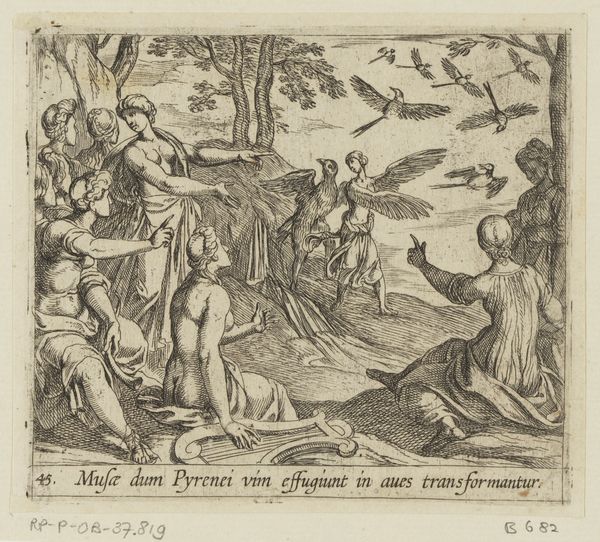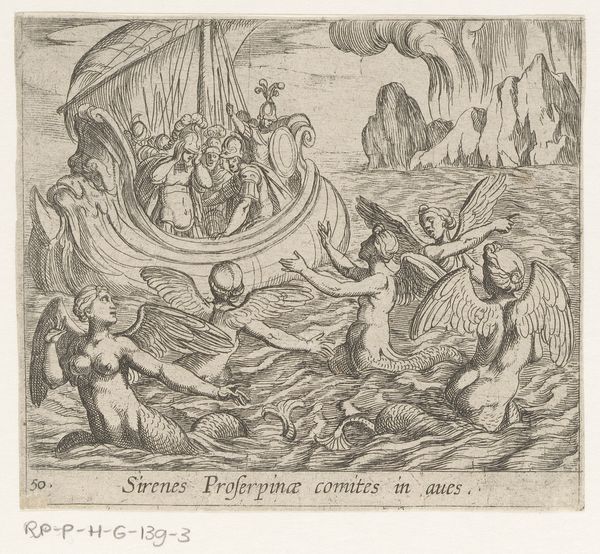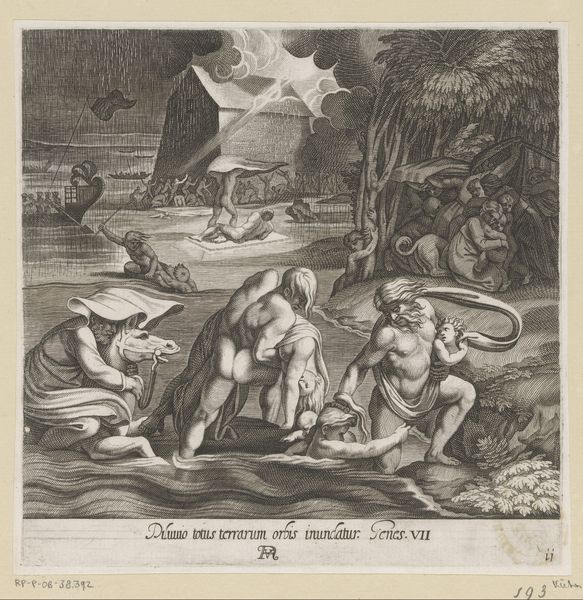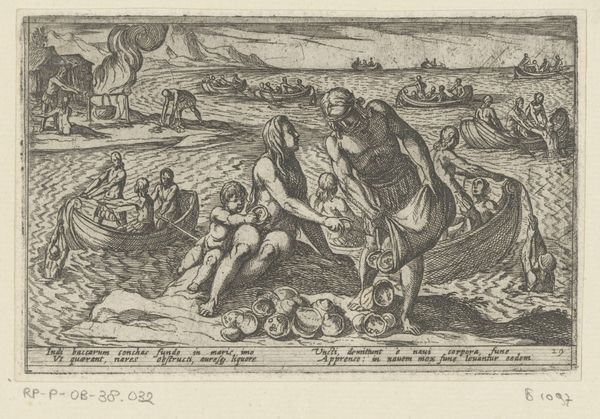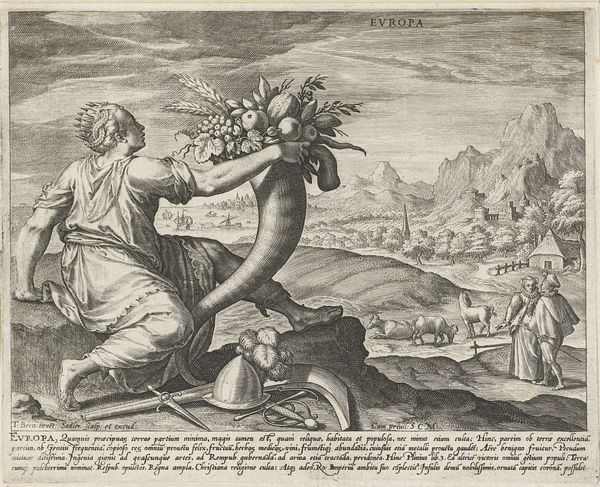
print, engraving
#
narrative-art
#
baroque
# print
#
landscape
#
figuration
#
history-painting
#
nude
#
engraving
Dimensions: height 104 mm, width 117 mm
Copyright: Rijks Museum: Open Domain
This is Antonio Tempesta's "Perimele", made around the turn of the 17th century using etching. The fine lines we see are the result of a painstaking process. Tempesta would have coated a metal plate with wax, then used a sharp needle to draw through the wax, exposing the metal beneath. The plate was then submerged in acid, which bit into the exposed lines, creating grooves. Ink was applied to the plate, filling the grooves, and the surface was wiped clean. Finally, paper was pressed onto the plate, transferring the ink and creating the print. The quality of line and detail in this print speaks to Tempesta's skill as a draughtsman and etcher. The contrast between the dark lines and the white paper creates a dramatic effect, enhancing the sense of depth and volume. Consider the sheer labor invested in a print like this: it's a reminder that even seemingly simple images are the result of skilled work. This etching isn’t just an image, it's a testament to the artist's hand and the rich tradition of printmaking.
Comments
No comments
Be the first to comment and join the conversation on the ultimate creative platform.
